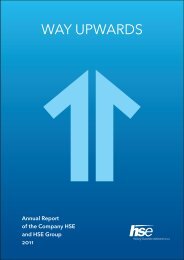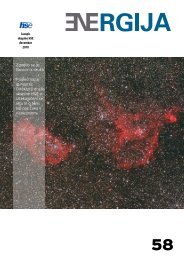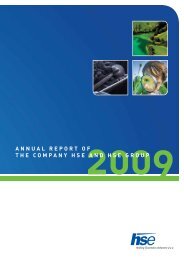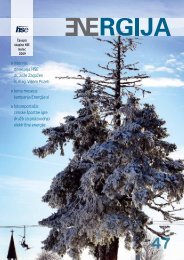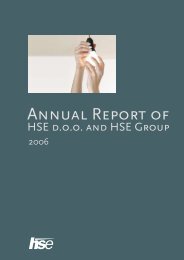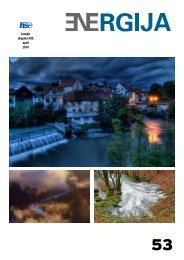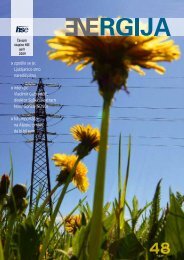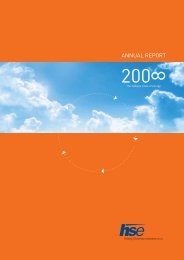Annual report - HSE
Annual report - HSE
Annual report - HSE
Create successful ePaper yourself
Turn your PDF publications into a flip-book with our unique Google optimized e-Paper software.
4.5.6 Branch and representative offices<br />
The company has two foreign branch offices - in the Czech Republic and in Slovakia, and<br />
a representative office in Romania. In 2012, the company did not perform any transactions<br />
through subsidiaries since the trade with electricity was transferred to the sole company.<br />
The operations of branch and representative offices are included in financial statements<br />
of the company.<br />
4.5.7 Significant accounting policies<br />
The company’s financial statements are prepared on the basis of accounting policies<br />
presented below. The abovementioned accounting policies are used for both years<br />
presented, unless otherwise indicated.<br />
In the event that comparable data is not disclosed under the same item as for the current<br />
year, such information is provided.<br />
4.5.7.1 Intangible assets<br />
Intangible assets are long-term assets enabling performance of the company’s registered<br />
activities, whereas physically they do not exist. The company’s intangible assets comprise<br />
long-term property rights and emission coupons for the purposes of electricity production<br />
in the <strong>HSE</strong> Group. Emission coupons for trading are disclosed among inventories.<br />
Upon initial recognition, an intangible asset is measured at cost. Cost includes costs that<br />
can be directly attributed to the acquisition of an item of intangible assets. The company<br />
did not finance purchases of intangible assets through loans; therefore, historical cost does<br />
not comprise costs of borrowing.<br />
Intangible assets are subsequently measured using the cost model.<br />
The company has no intangible assets, for which it would record the residual value when<br />
purchased.<br />
Amortisation is accounted for on a straight-line basis, taking into account the useful life<br />
of each individual (integral) part of an intangible asset. The amortisation begins to be<br />
calculated from the cost when an asset is available for use.<br />
Emission coupons are not amortised, since they are purchased for individual periods in<br />
which they are used.<br />
Useful life of groups of intangible assets are examined at the end of each financial year<br />
and adapted, if needed. In the event their useful life is extended, the cost of amortisation<br />
in the current year is decreased. If useful life is shortened, amortisation cost increases. The<br />
adjustment of useful life has to be calculated in a manner that the asset will be depreciated<br />
in the new predicted useful life. The change in useful life is considered as a change in<br />
accounting estimate and it affects solely the period in which the accounting estimate was<br />
changed and every following period of the remaining useful life.<br />
Individual items of intangible assets have the following useful lives:<br />
Intangible assets Amortisation rate (%) Useful life in years<br />
Computer software 5-33.33% 3-20<br />
Subsequent costs in relation to intangible assets are capitalised only in cases when they<br />
increase future economic benefits arising from an asset to which the costs refer. All other<br />
costs are recognised in profit or loss as expenses as soon as they are incurred.<br />
<strong>Annual</strong> Report <strong>HSE</strong> 2012<br />
4 Financial Report of the company <strong>HSE</strong><br />
119





